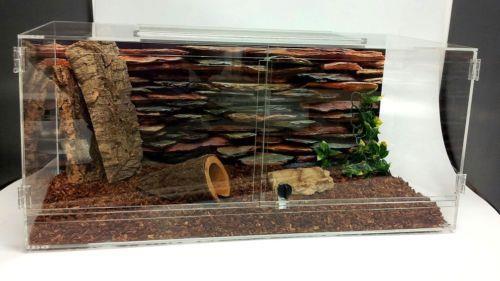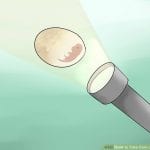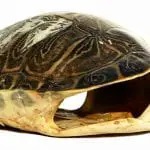The rubber boas are a snake species that are easy to take care of and maintained because of their hardy characteristics that are why they are commonly taken in captivity. It can be taken care of by an inexperienced breeder since there is also wide information about to grow this snake species well. Even though it has a hardy characteristic, there are still aspects to consider in taking care of them to make them feel that they are just in their natural environment. By giving them their basic needs, you can be sure that they can stay with you more than their expected lifespan.
These slithery and secretive rubber boas do not require special care from their owners, but there are still guidelines to follow so that captivating them will be successful. Your goal as a responsible owner is to make sure that they will stay in an environment just like their natural habitat, especially when they were taken directly from the wild. If they feel that they are not in their comfort zone, they may feel stressed and neglected, making them prone to different kinds of diseases or illnesses.
Housing
Choosing a vivarium for your rubber boa doesn’t need to be complicated since they are just small-medium sized snakes. Around 5 to 10-gallon aquarium can be used as long as it has a secure lid to avoid them from escaping because they have quite a strong physique. Make sure that the aquarium is free from any cracks or holes because they are considered as an excellent escape artist.
Place their cage in a place where they can have their own time. Rubber boas get easily stressed when they see a lot of human movements outside their cage. You may cage in more than two rubber boas as long as their cage is always clean and hygienic. Make sure that their cage is always moist to keep them always hydrated.
Substrate and Accessories

For their substrate, it is important to choose the ones that will not scratch their skin. The most commonly used in captivity are kiln-dried pine shavings and shredded aspen where they can also burrow, but the use of newspaper is also helpful, so cleaning and maintaining the cleanliness of their cage are easier. Avoid using a substrate that has fine particles and with sand, because it might go through in their mouths when they burrow or eat their food that may cause blockage in their passageways.
These types of snakes spend most of their time hiding. They may feel stressed, threatened, and aggressive if they cannot find hiding spots, so make sure to have a dark spot for them. You may also place other accessories on their cage that will make the vibes that they are just in their natural environment, just make sure that all the things are free from sharp edges.
Food

In captivity, their most common diet consists of mice regardless of their age and size. The rubber boas don’t have a voracious appetite, just like other snakes. There are some instances wherein they take time before grabbing in their food, not just like other snakes that will strike in to take their prey. Because of this characteristic of a rubber boa, it is not advisable to give them live prey because they might injure the snake by biting and scratching them through their teeth while they are fighting for their lives.
Frozen and pre-killed rodents work well for them so that they can just eat it anytime they want. Aside from rodents, they are also given lizards, small chicks, and insects. If it seems like they don’t have an interest in eating the food you’ve given, you may need to try wiggling the food to give the snake an idea that it is alive. It may take days for the food to be digested, so make sure to feed them on a schedule, at least thrice a week for juveniles and once a week for adults.
Temperature

The rubber boas are not suited for high temperatures. Make sure that the temperature in their cage does not exceed 85 degrees Fahrenheit and does not go down below 65 degrees Fahrenheit because temperatures 90 degrees Fahrenheit and above and 60 degrees Fahrenheit and below are extremely fatal to them. Warm temperatures trigger stress and aggression; that is why their ideal cage temperatures must be kept at a room temperature of 70-75 degrees Fahrenheit. These temperatures aids in digestion that doesn’t require you to have a basking area.
During the winter period, you may add up the temperature in their cage by making use of light bulbs with at least 25 watts voltage. It is also advisable to invest in a thermometer so that you can easily maintain the temperature, especially if you are living in a place where the weather is constantly changing. An indication that they have good body temperature if they are cool to touch but not cold when you handle them.
Lighting
Lighting equipment is not necessary since they are fossorial and nocturnal. Daytime sunlight is sufficient to keep their body warm if it gets cold at night; that is why it is ideal if you will place their cage in a place where there is access to natural sunlight. Lighting equipment is usually used to increase the temperature, but it should always mimic just like a daylight cycle because if they are exposed to high temperatures, it may interrupt their nighttime activity. If you are to use any lighting equipment, make sure to place it correctly so as not to cause skin burns.
Water
Water is essential in their cage for drinking and for soaking. The rubber boas enjoy soaking, especially if the temperature in their cage is quite warm. There should be a total of 2 dishes on their cage, one for drinking and one for soaking. When you see signs that the snake is about to shed, make sure that the water for soaking has sufficient water to help them shed properly. Water plays an important role in keeping their bodies hydrated that can be evident on their skin. Change their water supply every day, especially their drinking water, to prevent infections.
Exercise
Even though rubber boas are already in captivity, they still need to have an exercise so as to avoid health problems such as obesity or overweight. If their cage is at the right size, you may place different kinds of accessories such as logs and perches where they can crawl. You may also take them outside of their cage so that they can spread and move their whole body. They can get a lot of exercises if you would give them taming exercises.
Grooming

Aside from the snake’s shedding process, grooming is also a part of their hygiene. Taking a bath at least once a week should be on their routine so as to avoid any pest infestations and to make sure that they won’t have any bad smell. Clean their tank as well as its accessories regularly and remove their poop on a daily basis to avoid any bacteria buildup.
Tips in Handling Rubber Boa
- If you just got your rubber boa, it is not advisable to handle them frequently. It is best to handle them only after they have completed 4 meals to give them time to be familiarized with their environment and to be comfortable. There are high chances that they’ll become aggressive if you would handle them if they are not yet accustomed to where they are.
- Avoid holding your rubber after they have eaten. They would swallow their food as a whole so you can see a bulge in their stomachs. It causes great discomfort, that is why while they are digesting, avoid holding them so as not to disrupt the digestive process. Only hold them when you can no longer see any bulge.
- Invest in a snake hook because it is helpful if you are to feed them or if you would get them out of the cage to avoid them from biting you. Just make sure that whenever you will use the hook, slide it in the mid-section of the snake’s body.
- If you see signs of diseases or illnesses, observe them properly so that you would know when to take them into a veterinarian.
Final Thoughts
Just like other animals, snakes need to feel love, care, and affection from their owners to make them happy and healthy. The rubber boas have a quite long lifespan, especially in captivity provided that their needs are provided excellently. In the wild, they only depend on their survival capabilities, but in captivity, they depend on their owners only; that is why it is important that before deciding to take care of them, make sure that you can commit in giving them your full attention.



